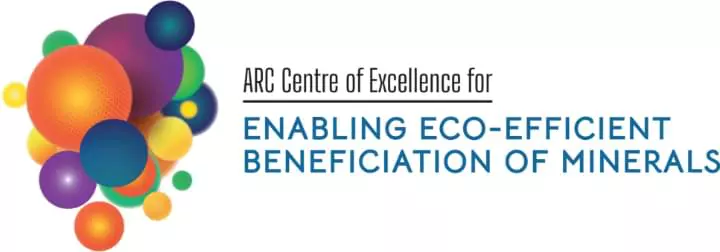Date: 5th September 2024
Media - COEMinerals Researcher George Abaka-Wood explains rare earth mineral recovery improvements in South Australia on ABC Radio SE (South Australia)
ABC South East (South Australia) Breakfast with Liz Rymill (5 Sept 24)
COEMinerals researcher Dr George Abaka-Wood (University of South Australia) explains what rare earth mining involves, and the improvements taking place in mineral processing.
Transcript:
This is ABC South East with Liz Rymill
Well, mineral sands and rare earths are used to make everything from electric cars and smartphones to batteries, magnets, health care and even some renewable energy infrastructure. Well, as Australia enters what Trade Minister Don Farrell is calling a golden age in critical minerals development, mining companies are eyeing vast stretches of farmland for mineral sand exploration. So what is it? What exactly does mining for mineral sands and rare earths involve? What’s the current forecast demand for these resources? Well, Doctor George Bakos (spelling error) is a research fellow in mineral process at the University of South Australia. And he joins me on the programme Doctor Abaka-Wood, welcome and good morning to you
Good morning. Actually, uh, my name is Doctor George Abaka-Wood
Thank you. Thanks for that. Correction.
Could you start by explaining what mineral sand mining and rare earth mining actually involves?
So uh, typically, uh, resources, uh, that we have globally differ chemically and mineralogically and that they actually require distinct metallurgical development and or specific approach to identify and design overall viable processes to recover them. So when we when talking about, uh, heavy mineral sands, then we are actually focusing on, uh, resources that could be re processed to recover stuff like zirconium, metals like zirconium, titanium, thorium, tungsten, rare and some industrial materials like diamond sulphide, garnet and gemstones. But, uh, in terms of rare earth mining. So we these are this is actually targeted at recovering what we call the rare earth elements, mineral rare earth elements, minerals and these minerals. Actually, uh include, uh, bastnasite, monazite, xenotime and some iron absorption clays Uh, what we need to understand here is that some heavy mineral sands, uh, could contain rare earth elements, for example, monazite and xenotime. So that’s a bit of a distinction
And tell me a little bit about how these mining explorations actually extract these minerals
All right. So so the first stage actually has to do with the exploration. Then you go for mining and for these rare earth or heavy mineral sands Uh, one of the most important step in recovering them is what we call the physical beneficiation. So in physical beneficiation, you tend to explore the differences in the characteristics of, uh, the, important heavy mineral sands or the important rare earths as it gains the, weight values to really separate them from uh, to separate the rare or the heavy minerals. So in that case, you actually don’t employ chemicals to achieve that. So once you achieve the beneficiation stage and you get the concentrates in terms of the rare earth or the heavy mineral sands, then that goes down to the chemical treatment where this is where you really separate the metals or the elements from the minerals. Then it goes to the separation stage, then purification stage for, uh, for sales, to sales, for applications uh, as needed
And in terms of the land usage. How is the land repatriated after exploration and what becomes of some of the tailings and the waste products that’s left in processing
Uh, in terms of, uh, land usage? Uh, I, think that one of the critical aspects of rare earth mining or heavy mineral sand mining is, uh, the ESG side of things, because in terms of ESG, then, uh you actually looking at means of assessing risk that are associated with, uh, the process or how you can improve social responsibility and enhance long term sustainability or meet stakeholder expectations. So, uh, land usage once, the operations are completed, then we got to start thinking about bringing back the land to as much as possible, its initial state before mining this. is actually a difficult, uh, because once a mining processes have gone down, you tend to destabilise the ecosystem. But, uh before mining companies are need to ensure that they have got very strong ESG stuff, uh, put in place to make sure that mining lands are returned to the state in which they are as much as possible, uh, where you make sure that the toxic components have been removed. Um, I think what, uh, in most cases, the challenge with heavy mineral sands or rare boosters is, uh, the amount of thorium or uranium that is left behind after, uh, the processes. But, uh, the important thing we need to understand here is that thorium or uranium could actually be employed under medical conditions to really, uh, treat symptoms of cancer and all that, because thorium and uranium can emit alpha particles that can actually deliver destructive energy to cancer cells and destroy them. So um, yeah, there are a number of opportunities that comes with the land, in terms of the waste that is left behind. They could be reused, they could be reprocessed to recover waste material, uh, waste inputs. That’s what we used to think of. But now technology has advanced. So this waste could actually be reprocessed to recover the uranium or thorium, which in the past used to be very harmful, or it used to be the concern for most communities.
Listen here: https://app.mediaportal.com/is…

